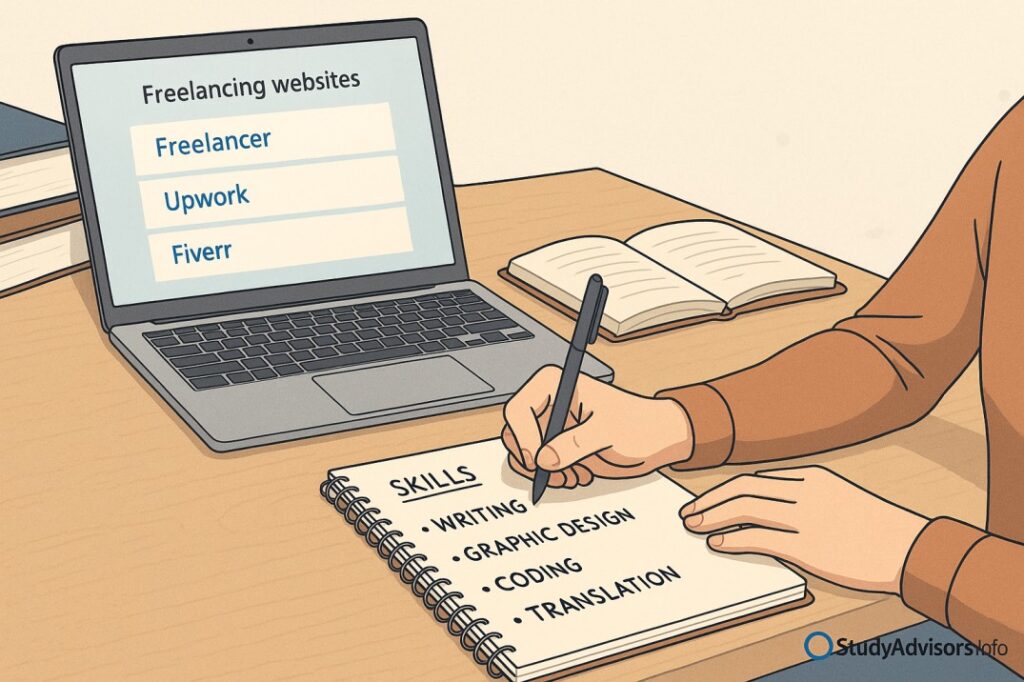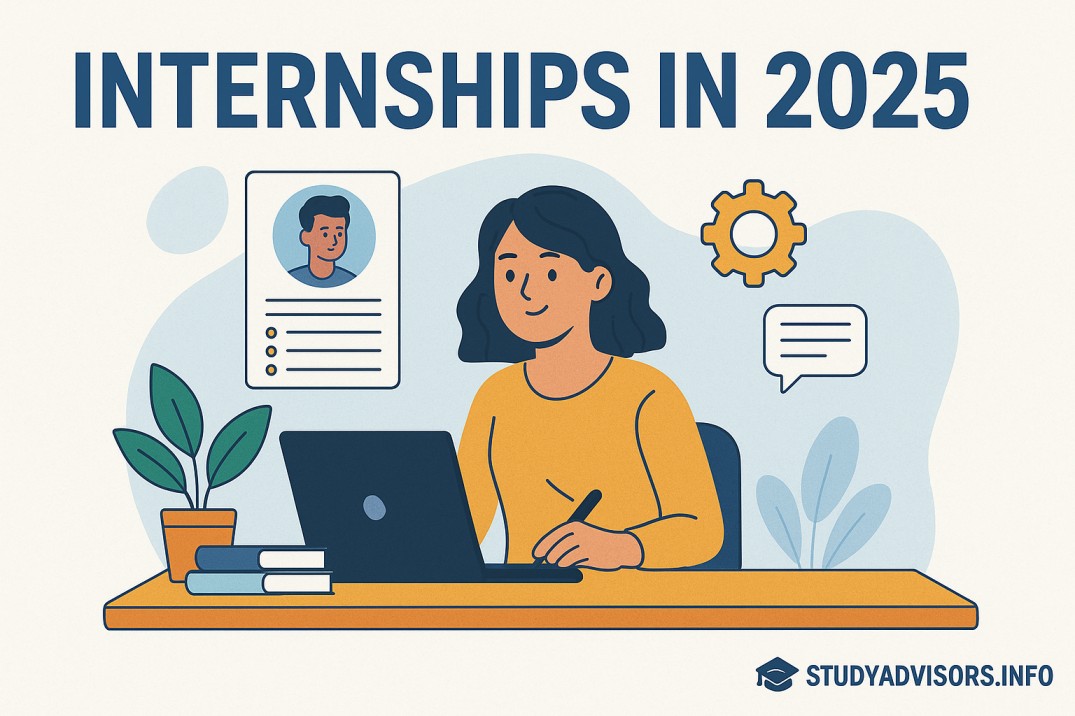When I was in university, the only way most of my classmates earned was by tutoring or working shifts at a café. Fast forward to today, and I see students building actual careers before graduation—all because of freelancing.
Freelancing isn’t a buzzword anymore; it’s a survival tool and a career starter. Picture this: a second-year student in Karachi editing YouTube videos for a Canadian vlogger, or an undergrad in Delhi managing social media accounts for a Dubai-based boutique. These aren’t made-up stories—I’ve met these students in workshops, and they’re living proof of how freelancing changes the game.
But let’s be honest, starting isn’t easy. Most students get stuck thinking “I don’t have skills” or “I’m too busy with classes.” That’s exactly why I’m writing this—so you have a practical, step-by-step roadmap.
Step 1: Stop Underestimating Your Skills
Here’s the funny part: every student already has something to offer, but they don’t see it.
Do you make great PowerPoint slides? That’s a skill. Are you the go-to person for proofreading your friends’ assignments? Another skill. Spend hours on Canva designing posters for college events? Clients pay for that too.
I once met a student who said, “I don’t have any skills.” But after five minutes of conversation, I found out he was great at explaining tough biology concepts to his classmates. Today he runs a small online tutoring gig.
???? Lesson? Look at what you do naturally—it might already be your first freelance service.
Step 2: Learn, But Don’t Get Stuck in “Learning Mode”
I’ve seen students spend months watching tutorials without taking action. Don’t do that. Yes, you should polish your skills, but remember: the fastest way to learn is by working with real clients.
Use free resources like YouTube, or grab a cheap course from Udemy. But after a week or two, start practicing on real projects—even if it’s free work for a friend’s startup or your college society. Those small experiences give you confidence and samples for your portfolio.
A student from my workshop in Dubai did exactly that. She offered free social media posts to her friend’s bakery for a month. The bakery loved her work, kept her on a paid basis, and now she earns more from Instagram posts than she ever thought possible.
Step 3: Build a Simple Portfolio (Don’t Overthink It)
Your portfolio doesn’t need to be fancy. Students often wait until they have “perfect work” before creating one. Wrong move. Clients don’t expect you to have 50 projects—three solid samples are enough.
- Writers → publish blogs on Medium or LinkedIn.
- Designers → upload posters or graphics to Behance.
- Coders → share mini projects on GitHub.
- Tutors → record a short video teaching a topic.
One of my students had nothing but class assignments. He turned those into portfolio pieces (with a little polish), and guess what? His first client hired him because the samples looked practical, not perfect.

Step 4: Pick ONE Platform to Start
Here’s where many students mess up—they create accounts on five different platforms and then get frustrated. Focus on one.
- Fiverr → easiest to start, since clients come to you.
- Upwork → competitive, but worth it for long-term work.
- Freelancer.com → mixed bag, but good for trying.
- Or… skip platforms and use LinkedIn to connect directly with clients.
Personally, I’ve seen students succeed faster on Fiverr because it requires less “proposal writing” and more showcasing. But if you’re confident in pitching, Upwork is gold.
Step 5: Write a Profile That Doesn’t Sound Like Every Other Student
Please—don’t write “I’m a student looking for work.” No client will hire you with that line.
Instead, show them what you can do for them.
❌ “I’m a student and I know Photoshop.” ✅ “I design creative, modern posters and social media graphics that attract customers.”
See the difference? The second one solves a problem. Clients care about results, not your student status.
Step 6: Take Small Projects First
Your first \$5 project matters more than waiting for a \$500 gig. That first review builds credibility. Deliver it on time, communicate politely, and give a little extra (like an additional edit).
One girl I guided started by proofreading essays for \$5. She was discouraged at first, but after 10 small jobs, she had glowing reviews. Now she charges \$50–\$80 per project, and those same clients keep coming back.
Step 7: Balance Studies and Work (The Hardest Part)
Freelancing gives freedom, but freedom without structure is chaos. I’ve seen students take on too much work, then panic during exams.
Block study time first. Then assign a fixed freelancing slot—maybe 2 hours in the evening. Use tools like Google Calendar or Notion. If you’re forgetful, alarms on your phone work just fine too.
Remember: clients can be replaced. Your degree cannot.
Step 8: Market Yourself Outside Platforms
Want to know the secret freelancing trick most students ignore? Networking.
- Post about your services on LinkedIn.
- Tell friends and family what you do.
- Join online student groups.
I know a student who landed her biggest client—a \$400/month retainer—just because she casually mentioned her freelancing in a WhatsApp group. Never underestimate word of mouth.
Step 9: Handle Payments Safely
Use trusted platforms like PayPal, Payoneer, or Wise. Never agree to work “off-platform” with strangers. And yes, keep track of your income. In some countries, student freelancers even get tax benefits, but you’ll only know if you keep proper records.
Step 10: Think Long-Term
Freelancing as a student isn’t just about pocket money. It can shape your career. Some of the most successful entrepreneurs I know started freelancing in college. They built skills, learned how to deal with clients, and later turned those lessons into full businesses.
So don’t just think about today’s income. Think about what kind of career path freelancing can open for you.

FAQs
Q1. I don’t have skills yet. Can I still freelance? Yes. Start with something simple—data entry, translation, tutoring. Build from there.
Q2. How much can I earn realistically as a student? Expect \$50–\$200/month at first. With consistency, crossing \$1000/month is very possible.
Q3. Will freelancing ruin my studies? Not if you plan. Take small projects first and increase workload only if you can handle it.
Q4. What’s the biggest mistake student freelancers make? Chasing money before skills. Always focus on delivering value first.
Q5. Can freelancing turn into a full-time career? Absolutely. Many students go on to start agencies or businesses from freelancing roots.
Conclusion: Your Freelance Journey Starts Today
Starting out feels scary—I know. But remember Sana from earlier? She didn’t wait until she was “ready.” She started small, learned along the way, and grew. That’s the real formula.
So, here’s my advice as an education consultant: Don’t overthink. Pick a skill, build a simple portfolio, and land your first project. That’s it. Once you get that first payment notification, trust me—you’ll never look at freelancing the same way again.
Your student years are the best time to try, fail, learn, and grow. Why wait? Your freelance career could start tonight—with your laptop, WiFi, and a little courage.









